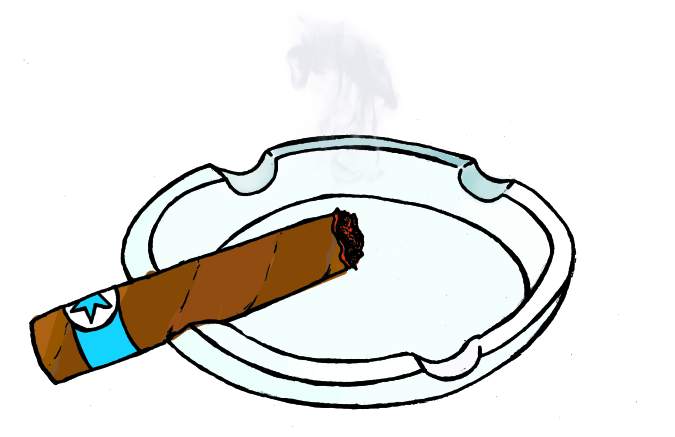We’re Going to Have a Weed Party
Washington legislators are doing everything they can to keep marijuana users from smoking together. It’s time that stopped.
It’s time for us to come together and smoke marijuana.
Over and over, legislators at all levels in Washington state have prevented us from doing just that by hampering public marijuana use—in fact, a recent law makes providing a place for public use a Class C felony. Lawmakers are making it impossible to promote and celebrate cannabis. Thus it’s time for some civil disobedience.
As an example of how cannabis can be used to elevate our civic engagement, let’s look at a state that’s getting certain things right: Colorado. Not only is the state working with its medical-marijuana dispensaries to expand patient care, many jurisdictions have licensed, members-only marijuana clubs where adults can safely use and learn about cannabis in a social, alcohol-free environment. In Seattle? Not allowed!
Colorado is also considering various social pot-use initiatives that would allow vape lounges and cannabis cafes. Another proposal would allow adults to bring marijuana into bars, theaters and restaurants. These establishments would all have dedicated smoking areas for adults, and smoking would never be visible from within 25 feet of any public space.
Colorado’s also leap years ahead on public events involving ganja. The best one I’ve seen so far was a collaboration between Edible Events, a cannabis company, and the Colorado Symphony. Called “Classically Cannabis” in the symphony’s High Note Series, it was a Bring Your Own Bud evening, including swag tables full of lighters and rolling papers, a designated smoking patio, and a parking lot full of food trucks for when the munchies kicked in. (Don’t get mustard on your tux, man!)
We legalized weed here in Washington. That’s a fact. (So is the $70 million in tax revenue we collected in our first year, which the legislature had no problem spending.) It’s also a fact that legislative pinheads are getting in the way of the public actually using it. “Once people have the right to acquire cannabis, the next logical step forward is figuring out what do they do with it,” says Hilary Bricken, head attorney at Seattle’s Canna Law Group. “People are saying, ‘So I can have it, but where can I use it and not feel like a criminal?’ ”
A voter-approved initiative banned cigar lounges (and all indoor smoking in public places) in 2005, and the mayor is attempting to shutter all private hookah lounges as well. We’ve already discussed the city’s no-smoking ban in parks. And now, with the passage of this summer’s draconian Bill 2136, marijuana clubs can’t exist either: “ ‘Marijuana club’ means a club, association, or other business, for profit or otherwise, that conducts or maintains a premises for the primary or incidental purpose of providing a location where members or other persons may keep or consume marijuana on the premises.” While designed to kill cannabis clubs, the law is (most likely) illegal, as it makes it impossible for medical patients to provide marijuana to other patients.
Even the Seattle City Attorney’s office thinks this is overkill. “We’ve supported creating adult-only areas where people can legally consume marijuana in order to avoid the problems caused by people using marijuana in public spaces, like streets and parks,” said Deputy City Attorney John Schochet. “Unfortunately, the blanket felony ban on ‘marijuana clubs’ in HB 2136 makes that impossible under current law. We hope to get that fixed during the next legislative session.” In the meantime, you’d be a fool to risk being arrested with a felony conviction on the line.
The Evergreen State needs to get some basic elements about legalization in place so as not become a laughingstock, and because the voters demand it! We need to be able to grow marijuana for personal use. (All the other legal states have this in place.) We need to decriminalize marijuana and expunge all records of those who were arrested and imprisoned for nonviolent marijuana-related offenses. And we need to allow and accommodate the actual smoking and vaping and ingesting of cannabis in adult spaces such as vape lounges, stoned cinemas, culinary tastings, art events, and Bud & Breakfasts.
The fact is, not only do people use marijuana, but they support the legalization and taxation of the plant for recreational purposes. It’s fun! It’s social! It’s no longer taboo! You’ve seen beer gardens and cocktail classes and wine-tastings galore, right? Oktoberfest, anyone? Walla Walla wine tours? Craft-beer workshops!? Hell, Smirnoff Vodka just signed as the official sponsor of LiveNation at 25 music festivals, and Blu, an e-cigarette (owned by Imperial Tobacco) sponsors IndyCar, handing out samples of their toxic-sticks at auto races! Marijuana may be safer than alcohol, but it’s still being shunned and shamed and banned throughout the state.
Well, guess what? In order to get it right (and rolling), I’ve decided to host a series of Higher Ground Cannabis Cultural Events. It’s not a club. I won’t sell tickets, and I won’t sell weed. We also won’t pass joints around—as, shockingly, this is a felony offense (considered “possession and distribution,” with potentially five years in the slammer and a $10,000 fine!) The gig will be BYOBong—and we’ll all get along. It will be educational, instructive, and a way to exercise our rights. I’ve lined up one of Seattle’s best bands, and we’ll have a few surprise guests to elevate the dialogue. We’ll proudly and safely use cannabis in an adult-only environment, and have a damn fine time!











